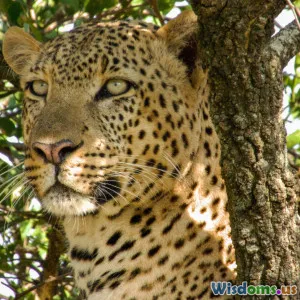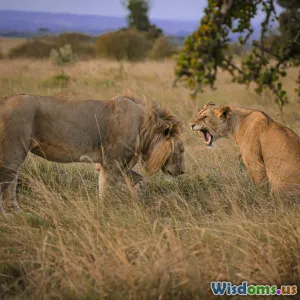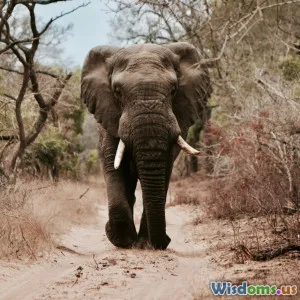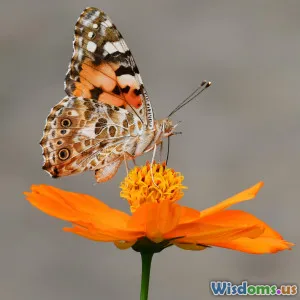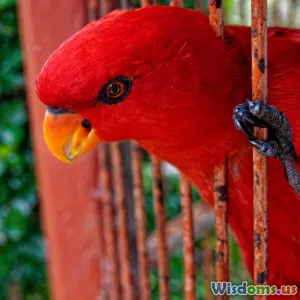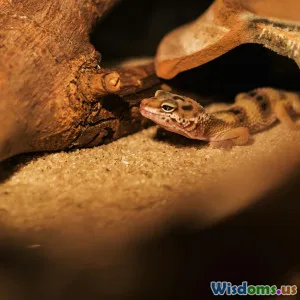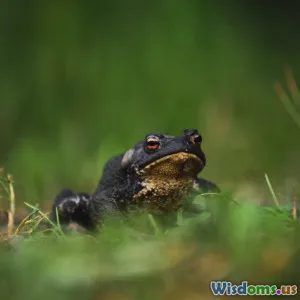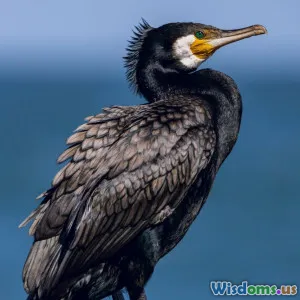
The Impact of Climate Change on Species
8 min read Explore how climate change threatens wildlife, disrupts ecosystems, and what it means for Earth's biodiversity. (0 Reviews)
The Impact of Climate Change on Species
Climate change is no longer a distant threat; it is an immediate and escalating reality reshaping the lives of species across the globe. As global temperatures rise, ecosystems face unprecedented challenges that disturb the delicate balance critical for species survival. But what exactly does this mean for the animal kingdom and biological diversity? This comprehensive article unpacks the multifaceted impact of climate change on species, exploring changes in habitat, behavior, population dynamics, and the looming risk of extinction.
Rising Temperatures and Shifting Habitats
One of the most direct effects of climate change is the alteration of habitats through rising temperatures. Species traditionally adapted to specific climate zones must either adapt, migrate, or face decline.
Case Study: Alpine Flora and Fauna
In mountainous regions, like the European Alps, warmer conditions have pushed plants and animals to migrate upward. The Apollo butterfly (Parnassius apollo), previously confined to cooler valleys, is now limited to higher altitudes. However, with mountaintops finite in space, species face a shrinking habitat "sky island" phenomenon leading to habitat compression and increased risk of local extinction.
Ocean Species Migration
Similarly, marine species such as Atlantic cod (Gadus morhua) have been shifting their ranges northward to cooler waters. A 2020 study showed that cod populations in the Gulf of Maine have declined nearly 75% due to warming oceans and altered currents affecting breeding grounds and food availability.
Phenological Changes: Timing Is Everything
Climate change influences the timing of vital biological events, known as phenology. When species alter breeding, migration, or flowering times, it can decouple established ecological interactions.
Migratory Birds Losing Sync
Many migratory birds time their arrival based on daylight cues, but climate change affects food availability, such as insect emergence, earlier in the spring. For example, North American pied flycatchers (Ficedula hypoleuca) arriving later than optimal suffer reproductive failures, reducing population growth and threatening survival.
Coral Spawning Disruptions
Coral reefs rely on synchronized mass spawning events triggered by specific temperature cues. Rising sea temperatures tend to desynchronize or shift these events, leading to reduced fertilization success, which compounds stress on already vulnerable coral ecosystems.
The Risk of Extinction: An Alarming Reality
Rising temperatures, altered precipitation patterns, and extreme weather events put enormous stress on species, increasing the risk of extinction.
Amphibians: The Canary in the Coal Mine
Amphibians, with their permeable skin and dependence on moist environments, are especially vulnerable. The Golden Toad (Incilius periglenes) of Costa Rica saw its extinction in the late 1980s, often linked to shifts in cloud cover and temperature tied to climate change. Globally, climate change exacerbates chytrid fungus outbreaks, decimating amphibian populations.
Polar Bears Facing Habitat Loss
Polar bears (Ursus maritimus) depend on sea ice to hunt seals. Antarctic sea ice is declining at an average rate of 13% per decade, with record lows recorded over the past decade. This loss shortens hunting seasons, causes nutritional stress, and reduces reproduction, contributing to their status as vulnerable species.
Behavioral and Physiological Adaptations
Some species display remarkable adaptability. Shifts in behavior and physiology can be a lifeline for survival.
Plasticity in Diet and Habitat Use
The black bear (Ursus americanus) now expands its foraging range into urbanized areas as traditional berry-producing habitats decline. This adaptation shows flexibility but also increases human-wildlife conflicts.
Evolutionary Changes on the Horizon
Rapid environmental change can drive evolutionary pressure. Research indicates some fish populations are evolving smaller body sizes due to warmer waters affecting metabolism, promising a window into future aquatic adaptations yet uncertain in long-term viability.
Cascading Effects on Ecosystems
The impact on individual species also reverberates through entire ecosystems.
Predator-Prey Dynamics
Changes in migration and reproduction can disrupt predator-prey relationships. For instance, mismatched timing between snowshoe hares and lynx populations may destabilize northern forest ecosystems.
Pollination Networks Under Threat
With insects like bees facing heat stress and altered flowering times, crop pollination and wild plant reproduction face uncertainty, with implications for global food security and ecosystem health.
Taking Action: Conservation Strategies in a Changing Climate
Addressing the impact of climate change on species requires a multi-pronged approach:
- Protected Area Expansion: Creating climate corridors and larger reserves to facilitate species migration.
- Restoration Ecology: Reviving degraded habitats, such as wetlands that act as carbon sinks and refuges.
- Assisted Migration: Relocating vulnerable species to suitable habitats under scientific supervision.
- Reducing Carbon Footprint: Global efforts to curb greenhouse gas emissions remain foundational.
Conclusion
The fate of species in the face of climate change is a testament to the interconnectedness of life on Earth. Each affected species signals broader ecological shifts that demand urgent scientific understanding and collective action. While challenges are immense, harnessing knowledge on species' responses and proactive conservation can forge pathways to resilient ecosystems. As stewards of this planet, humans hold the power—and responsibility—to mitigate climate change impacts and preserve the incredible diversity of life for future generations. The time to act is now.
Sources:
- Parmesan, C. (2006). Ecological and Evolutionary Responses to Recent Climate Change. Annual Review of Ecology, Evolution, and Systematics.
- NOAA Fisheries. (2020). Atlantic Cod and Climate Change.
- National Wildlife Federation. (2023). Effects of Climate Change on Polar Bears.
- IUCN Red List. Species assessments related to amphibians.
[Author's note: This article integrates real-world studies and examples highlighting the pressing impacts of climate change on species worldwide.]
Rate the Post
User Reviews
Popular Posts










